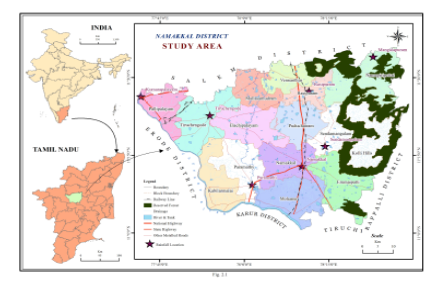
Geo-Eye
Department of Geography & GIS

Department of Geography & GIS

Geo-Eye
Year: 2019, Volume: 8, Issue: 2, Pages: 46-53
Original Article
S Vinothkanna1*, V Emayavaramban2
1Guest lecturer, Department of Geography, School of Earth and Atmospheric Sciences, Madurai Kamaraj University, Madurai, 625021, Tamil Nadu, India
2Professor and Head, Department of Geography, School of Earth and Atmospheric Sciences,
Madurai Kamaraj University, Tamil, Nadu - 625021, Madurai, India
Received Date:06 August 2019, Accepted Date:18 November 2019
Drought has long been recognized as one of the major causes of human misery and being the natural disaster that annually claims the most victims. Droughts are recurring climatic events, which often hit everywhere, bringing significant water shortages, economic losses and adverse social consequences. Water scarcity can be said as the cause and effect of drought. It is not possible to avoid droughts. But drought preparedness can be developed and drought impacts can be managed. The levels of drought preparedness in countries of the region differ significantly. The success of both depends, amongst the others, on how well the droughts are defined and drought characteristics quantified. Hence, an attempt has been made in this study to identify the drought condition on rainfed namakkal district. Annual normal rainfall of Namakkal is found to vary from 478 to 860 mm with an average of 732 mm. Among the monsoons, Southwest monsoon (SWM) had higher amount of average rainfall followed by Northeast monsoon (NEM) rainfall. During SWM, except the locations Paramathy all other locations have dependable rainfall. During NEM, the locations Namakkal, Rasipuram and Paramathy had CV higher than 50 Per cent that are not dependable. Except this all other locations have dependable rainfall. Most of the locations had witnessed 1 to 6 moderate drought years in both the monsoons. The study based on SPI will be helpful for assessing the drought severity.
Keywords: Rainfall; SWM; CV; Drought; Index
© 2019 Vinothkanna & Emayavaramban. This is an open-access article distributed under the terms of the Creative Commons Attribution License, which permits unrestricted use, distribution, and reproduction in any medium, provided the original author and source are credited.
Published By Bangalore University, Bengaluru, Karnataka
Subscribe now for latest articles and news.